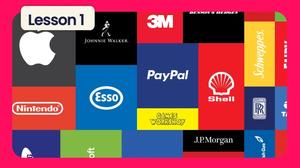Stock Market for Beginners: 10 Key Investing Terms You Need to Know
By Boring Money
17 April, 2025
Diving into the stock market can feel like learning a whole new language, so it's perhaps no surprise that so many of us find it confusing. Our research found that over one-third of UK investors rate themselves as having "low confidence" when it comes to investing, and women were considerably more likely to report a lack of confidence (42%) than men (28%).[1]

If this sounds like you, don't worry, we're here to translate the jargon into plain English. Whether you're just starting out or looking for a quick refresher, understanding these essential investing terms will help you navigate the financial world with more confidence.
1. Shares
How do shares work?
Shares are the building blocks of the stock market. For example, the famous FTSE 100 - often referred to when discussing the performance of the UK economy - is made up of shares from the 100 biggest companies in the UK. Investors can buy individual shares or can own a "fund", a collection of lots of different shares wrapped up in one product. We'll explain more about funds later.
Shares exist to enable companies to raise money to fund their activities. You buy shares - giving the company money in the process - and in return you get ownership of a small slice of that business. The key thing to bear in mind, however, is that share prices can move up and down a lot at very short notice. This is why it's often recommended that beginner investors spread their investments across multiple shares by investing with funds, rather than owning just a select few shares. This concept is called "diversification" - we'll cover this later too.
For more information about how shares work, head over to our full guide below to learn everything from the pros and cons to the typical trading costs.
2. Funds
How do funds work?
A single fund will typically have about 30-60 different "underlying investments" in it. Not only does this spread your 'risk' around (more on this later), but it saves you from having to trawl the internet to buy dozens of individual shares all by yourself! You can just buy one fund and be done with it. Most investors hold between 8-16 different funds to get a good mix and spread their bets around.
You can think of investing in funds like buying a mixed case of wine; You don't have to be a connoisseur and someone else picks the contents they think are good. Funds come in lots of different flavours - such as multi-asset funds - and you can even choose different types - like an exchange-traded fund (ETF) - to get a good mix.
Listen to our Founder & CEO Holly Mackay explain more about why funds are awesome in the clip below.
3. Bonds
How do bonds work?
Let’s imagine someone wanted to borrow a grand from you. The amount you want in return for lending to them is probably going to be higher if they're known for being flakey, right? The same principle applies in the world of finance.
If we lend money to the UK government, for example, we probably feel a bit more confident about getting our money back than if we lend money to - say - a small copper producer in the Democratic Republic of Congo. So we might not feel the need to ask for as much interest to compensate us for the risk.
This is why government bonds (called 'gilts' in the UK) typically pay less - or have a lower yield - than some corporate (company) bonds.
Investors can invest in bonds either directly or via other products which have bonds in them - such as multi-asset funds, ETFs, or investment trusts. They typically make up a large proportion of pensions, particularly for those who are closer to retirement age and getting ready to cash in on their pot, as bonds are generally seen as being less risky than shares.
4. Portfolio
How do you manage a portfolio?
You can hold and manage your portfolio by yourself, or you can employ a financial adviser to manage your portfolio on your behalf. This is a more common route for people who have large or especially valuable portfolios, as the logistics of monitoring and managing many different investments can be rather time-consuming and exceedingly technical.
It's widely believed that shares and bonds make up the core of a successful investment portfolio, but you can include many different assets in your portfolio at your own discretion. That being said, there's one key word of wisdom to bear in mind when making your ideal investment portfolio: diversification. Scroll down to find out what it means and why we keep banging on about it!
5. Diversification
How to diversify your investment portfolio
For illustrative purposes, let's say you invested 85% of your portfolio in just FTSE 100 shares. This would be a poorly diversified portfolio, as you're disproportionately exposed to the UK stock market. So if it has a bad day and tumbles, so will your portfolio! With not much else to cushion the blow. But if you only had 10% of your portfolio in FTSE 100, the impact of any downturn would be limited and the value of your portfolio wouldn't be harmed as much.
This is the basic principle behind diversification - spreading your bets by making sure your portfolio includes a healthy mix of different assets, sectors, and regions. You could, for example, dedicate some of your portfolio to a multi-asset fund - so you can increase your diversification and leave all the complicated decision-making to the experts. In theory, this means you shouldn't have to worry as much about how "risky" your portfolio is!
6. Risk
Mitigating investment risk with different assets
Let's look at risk from an asset point of view. For example, individual shares are considered to be relatively high risk assets to invest in as their price can (and often does) fluctuate multiple times per day, sometimes by significant amounts. Cash, on the other hand, is typically seen as a low risk asset because its value tends to be more stable. This is why you often see "high risk" portfolios or funds with a larger proportion in shares and "low risk" portfolios or funds with a larger allocation to assets considered to have a lower risk profile, including cash and bonds.
On the other hand, a region-based example of risk could be that investing in the UK economy is generally seen as lower risk, but investing in an emerging market - like some parts of Asia or South America, for example - would be considered a higher risk investment strategy. So a fund that invests in North American companies might be perceived as low risk compared to one that invests in companies based in, for example, Bolivia.
Protecting your portfolio (and profits) from investment risk mostly comes down to diversification, as we mentioned earlier. But it's also a lot to do with your timeframes.
Time in the market, not timing the market
At the heart of it, all investing involves - by its very nature - some degree of risk. And this isn't to say that you should always be worried about it. The stock market is ultimately unpredictable, yes, but as well as staying diversified, having time on your side can help to reduce your risk exposure. Let's look at an example that many of us will be familiar with.
In 2008, for every £100 you invested in the FTSE 100, you would have lost around £30. This sounds pretty catastrophic, right? But continue into 2009 and you would have made about £28 of this back. Following this, the UK entered a decade of growth buoyed by low interest rates, sexy tech companies, and lots of cheap money sloshing around. Many would have more than likely made their money back and then some!
The point here is that, if you had only invested for a short time, you could have been £30 down on every £100 you invested. But if you'd stood your ground and continued your investment for the longer-term, you most likely would have recouped your losses and maybe even made a profit, by giving the market a chance to recover - and then some.
In the video below, our CEO Holly spoke to behavioural psychologist Paul Davies about how our brains are hardwired to think about investment risk, and when our instincts might actually be leading us to make bad decisions.
7. Investment returns
8. Dividends
Regular dividends
This is a type of dividend that is paid on a regular, predetermined basis to the investor. This is usually on a quarterly basis but can also be monthly, biannually, or annually.
Special dividends
A special dividend is a one-off dividend payment, usually given to investors after a particularly strong earnings season. Sometimes companies pay dividends to offload accumulated cash that it no longer needs.
Variable dividends
Variable dividends are similar to regular dividends and are typically offered by companies in the gas, oil, timber and mining sector. They're usually paid at regular intervals but the amount varies and depends on the company's earnings in the previous quarter or year.
Dividend-paying investments are popular among 'income investors' - these are investors that prioritise a regular stream of income from their investments. Types of investment which offer dividends include investment trusts (some of which have a coveted reputation for consistently paying - and even increasing - dividends over decades) or equity income funds.
9. Bull and bear markets
You might see the phrases "bull market" and "bear market" thrown around when talking about investing. These terms are used to describe the overarching sentiment behind what's going on in the stock market and are commonly accompanied by images of the famous bronze statue of a bull on New York City's Wall Street.
Bull market
Bear market
10. Other common investing terms
There's no escaping it - there's a lot of technical jargon in the finance world, and the more you learn, the more you encounter! Here are a few more common terms and phrases you might come across on your investing journey and a brief definition for each:
How to invest in the stock market
Now that you've tackled some of the technical jargon, you may feel that you're ready to dive in and start investing. But where to start? What sort of account do you need? And what are the best things to invest if you're a beginner who's never done it before?
Don't fret! It's always a bit daunting when you're just starting out. Thankfully, we can help you take those all-important first steps with our bitesized 'Investing for Beginners' course, where you can learn everything from why multi-asset funds are your friend to the 10 top things you need to know before you get started.
Best investment providers for beginners
Boring Money has over 8 years' experience scouring the market to identify the providers we think come out on top, on everything from the Best ISA to the Best Investment App.
We put our test accounts through their paces, collate 20,000+ real investor reviews, assess the fees and more to find the ones which offer the best experience and overall support for UK investors today.
If you're a beginner investor and want to know where to open your first ISA or investment account, check out our Best For Beginners 2025 award winners to see who has our seal of approval.
---







